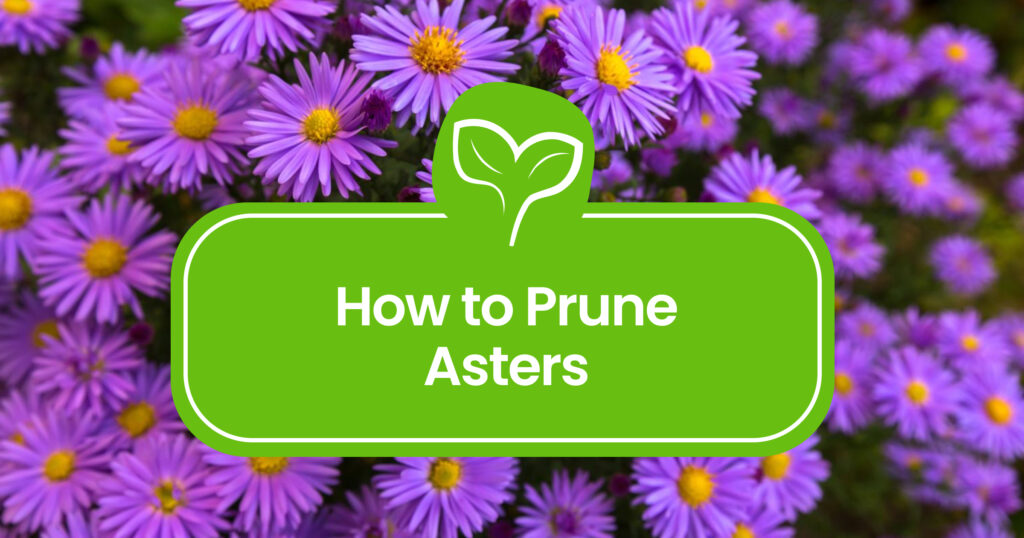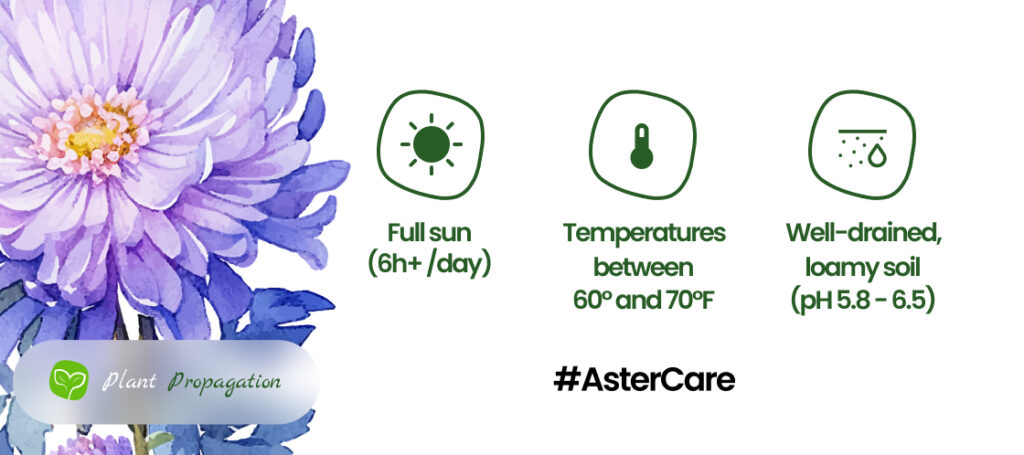
Welcome to the ultimate beginner’s guide to pruning asters! Whether you’re new to gardening or looking to improve your plant care skills, this guide is here to help. Pruning asters is simple but important for keeping your plants healthy, preventing disease, and encouraging lots of beautiful blooms.
In this article, we’ll cover everything you need to know, from why and when to prune, to the tools you’ll need and step-by-step instructions for both thinning and pinching. We’ll also touch on important aftercare practices to keep your asters thriving. With these tips, you’ll be ready to maintain gorgeous, vibrant asters in your garden.
Do Asters Need to Be Pruned?
First things first: why bother pruning your lovely plants? Asters don’t strictly need to be pruned, but there are some really good reasons to do it. For starters, pruning helps maintain a shape and size that you like, especially since asters can grow quite fast in rich soil.
Thinning out your asters also keeps them healthier by reducing the risk of mildew and other diseases. Plus, there’s a big bonus: pruning leads to many more flowers throughout the growing season. So, while it’s not absolutely necessary, pruning can make your asters look better and bloom more.
When to Prune Asters
You should prune Asters 4 times a year: one early spring, mid-summer, late summer, and late fall. Start in early spring by removing any damaged parts. Then, in midsummer, give your plants a good trim by cutting them back by about half. This encourages more growth and lots of blossoms in the fall.
Throughout the growing season, keep deadheading spent flowers to maintain a tidy appearance and prevent self-seeding. Once your asters have finished flowering in late fall, you can prune them back to just a few inches above the soil line. This final cut helps prepare your plants for a healthy start next spring.
The Tools You’ll Need
Before you start pruning anything in your garden, you want to make sure you have the right tools. Pruning Asters don’t require a full arsenal, only 3 things:
- Pruning Shears: These are essential for making clean cuts on smaller stems, which help your plants heal faster and stay healthy. Look for high-quality shears that are comfortable to use and keep them sharp for the best results.
- Loppers: Loppers are your go-to tool for thicker stems and hard-tor-reach parts. With extra leverage, it is much easier to make clean cuts on larger parts of the plant, ensuring you don’t damage the asters.
- Gloves: Gloves protect your hands from thorns, splinters, and dirt. A sturdy pair of gardening gloves will keep you safe and comfortable while you work.

Pruning Asters Step-by-Step
1. Clean your tools
Before cutting into your plant, you want to make sure your tools are clean. This is the best way to avoid any infections.
2. Thinning Asters
When to thin: Early Spring
- Identify the stems you want to remove. A good rule of thumb is to cut back about one in three stems.
- Using your pruning shears or loppers, cut the selected stems off at the base.
- Ensure you remove entire stems to promote airflow and reduce the risk of mildew.
3. Pinching Asters
When to Pinch: Mid-spring to early summer.
- Using your fingers, pinch off the growing tips and the first sets of leaves on the stems.
- Pinch just above the node (the point where leaves attach to the stem) for the best results.
- Continue this practice weekly until mid-July to encourage more branching and, consequently, more blooms.
4. Deadheading Spent Blooms
When to Deadhead: Throughout the growing season.
- Using your pruning shears, snip off spent blooms just above the nearest set of healthy leaves.
- Regularly check your plants and remove any faded flowers to redirect the plant’s energy into producing new blooms.
Aftercare
After you’ve finished pruning, there are some things you can do to ensure your asters remain healthy.
- Watering: Water your plants deeply to promote strong root growth.
- Fertilizing: Apply a balanced fertilizer monthly to provide essential nutrients.
- Monitoring: Keep an eye on your asters for any signs of stress or disease.

Frequently Asked Questions
Do asters need to be pruned?
Asters don’t strictly need to be pruned, but it helps maintain their shape and promotes healthier growth. Pruning also leads to more blooms throughout the season.
How often do you pinch asters?
Pinch Asters weekly during spring and early summer. By gently pinching off 1 inch of the growing tips of all the primary stems, you encourage the growth of flower buds.
